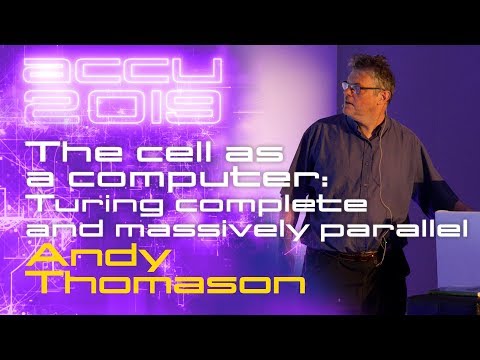By Andy Thomason
If you think that computing devices are a new thing, think again. Biology got there first, four billion years ago and we have been running a six bit instruction set since then.
Human computing devices have a long way to go to match the computing power of the human cell and point the way to alternative programming models which are awesomely parallel and have outstanding storage capacity.
Can we learn from biology to build biocomputers? What is the biological equivalent of a transistor, a ROM or a CPU? How would we do I/O with a biocomputer, could we install a debugger in your brain cells, disassemble your genes or interface to our visual cortex?
In this talk we give concrete numerical answers to these questions and pose some questions ourselves. For example, which is smarter, your smartphone or your beer?












